Preventing Calcium and Biofilm: Guide to a Flake-Free Hot Tub
September 27th, 2024
September 27th, 2024
There’s nothing quite like slipping into a hot tub after a long day, the warm water enveloping you as the jets massage away stress. Yet, the joy of this moment can quickly evaporate if your spa session is disrupted by a flurry of white flakes. These pesky invaders are not just unsightly—they hint at underlying issues that could compromise the sanctity of your bubbling oasis.
I remember the first time I encountered these flakes. A few years ago, I eagerly anticipated a relaxing soak, only to find my hot tub resembling a snow globe. At first, I thought it was harmless debris, but a closer look revealed the true culprits: calcium deposits and biofilm. My initial frustration led me down a path of discovery, unraveling the causes and most effective remedies for this common spa nuisance.
Understanding how these flakes form is crucial. Often, they stem from imbalances in water chemistry or the presence of organic material. Hard water is a frequent offender, leaving mineral residues that accumulate over time. Additionally, inadequate sanitation can invite bacteria to create biofilm, which further exacerbates the problem.
By diving into the intricacies of prevention and removal, you gain the upper hand. Maintaining the perfect harmony in your hot tub not only keeps it flake-free but also extends its life and enhances your relaxation experience. Through careful attention and proactive measures, you can ensure that your haven remains inviting and pristine.
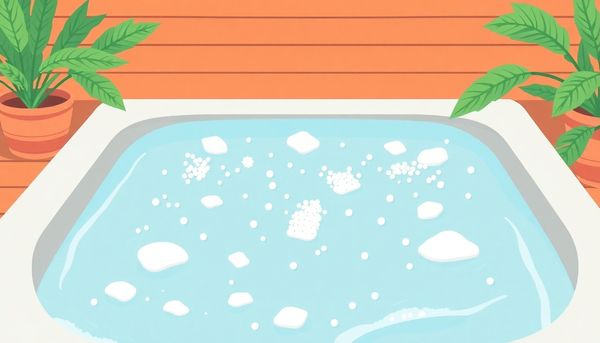
Spotting mysterious white flakes in your hot tub can be a bit unsettling. They're not just an eyesore but indicate underlying issues that need attention. Two main culprits often lead to these unwelcome particles: calcium scale and biofilm buildup.
Calcium scale, the most common issue, occurs when the water has high calcium levels, a condition known as hard water. Over time, calcium deposits accumulate, forming noticeable white flakes. This is especially prevalent in areas with naturally hard water, making regular water testing crucial. My friend Tom once shared how he battled with these flakes after moving to a new home, only to discover the city's hard water was the root cause. Regular use of a calcium reducer can tackle this problem, preventing the flakes from making a return.
But calcium isn’t the only suspect. A less obvious, yet equally troublesome cause is biofilm buildup. This occurs when mold finds a cozy home in the warm, moist environment of a neglected tub. If left unattended for too long, mold can thrive, creating a biofilm that breaks apart into tiny flakes. It's vital to keep your hot tub clean, ensuring you drain and scrub it regularly. My neighbor, Lisa, learned this the hard way. After leaving her hot tub unused throughout winter, she had to commit to a deep clean to rid it of pesky mold flakes.
Understanding what you're up against is half the battle. With this knowledge, you can now focus on reclaiming your hot tub’s pristine state.
White flakes swirling in your hot tub can seem like an unwelcome guest at an otherwise relaxing retreat. Often, these intruders are calcium scale deposits, a common issue for those with hard water. When the calcium content in the water surpasses its saturation point, it begins to crystallize, forming the pesky flakes you're spotting. These deposits not only mar the aesthetic appeal of your tub but can also lead to more serious issues like clogged filters and damaged components if left unchecked.
To identify if calcium scale is indeed your culprit, there's a simple test you can perform. Collect a sample of the flakes along with some water in a small container. Add around 20 drops of bleach or liquid chlorine, stir gently, and wait for about 30 minutes. Should the flakes persist in the solution, you’re dealing with calcium deposits. On the other hand, if they dissolve, biofilm from mold is more likely the cause.
I recall a time when my own hot tub was invaded by these stubborn flakes. After performing the test, I confirmed it was calcium scale. The solution involved implementing a consistent water balance regimen and using a scale inhibitor. This not only cleared the existing flakes but also prevented future occurrences, restoring the hot tub to its pristine condition. Addressing the problem head-on ensured many more hours of enjoyable soak sessions without the interruption of unwanted floating debris.
The sight of white flakes drifting in your hot tub might ring alarm bells, particularly when these pesky intruders are revealed to be biofilm buildup. This insidious layer forms when bacteria and other microorganisms cling to surfaces within the tub, encasing themselves in a protective film that can be challenging to eradicate. A friend once described their experience with biofilm as if their hot tub had turned into a snow globe, only far less appealing.
To tackle biofilm, the first step is a thorough cleaning. Drain the water completely and target the nooks and crannies with a specialized spa cleaner. Scrubbing the shell, jets, and other components ensures that remnants of biofilm are banished. A personal tip is to use a toothbrush for those hard-to-reach areas; it might sound old school, but it’s surprisingly effective.
Next, address the water lines. Biofilms love to hide within the plumbing, so using a line flush product can help dislodge these stubborn deposits. Make sure to run the jets afterwards with the flush circulating throughout the system to break down any remaining buildup. Once your cleaning regimen is complete, refill the tub with fresh water.
To prevent biofilm from making a comeback, maintain a diligent cleaning schedule and monitor sanitizer levels regularly. Investing a little time now ensures that your hot tub remains an inviting retreat rather than a breeding ground for unwanted guests.
Owning a hot tub can be a slice of paradise, but it's essential to keep it free from unsightly white flakes that can ruin the experience. To prevent these pesky intruders, adopt a proactive approach focused on water chemistry and cleanliness. Start by routinely testing your hot tub water. It's crucial to maintain a balanced pH level between 7.2 and 7.8 and keep calcium hardness in check. If your water tends to be hard, consider using a water softener or a sequestering agent to prevent calcium scale buildup. These tools help bind excess minerals, effectively keeping them from solidifying into flakes.
Consistency is key when it comes to hot tub hygiene. Make a habit of cleaning your filter every two to four weeks, removing any debris that could contribute to biofilm formation. This simple act ensures that water circulates smoothly, minimizing the chances of mold growth. Think of it like flossing your teeth—it's a small effort for a big payoff.
Moreover, practice a regular ritual of draining and refilling your hot tub at least every three months. This not only refreshes your water but also resets the chemical balance, giving you a clean slate. During this process, a mild, non-abrasive cleaner can be used to scrub the hot tub's surfaces, particularly the sides and seating areas where biofilm can accumulate.
Keep an eye on your climate, too. In humid areas, moisture-loving molds are more likely to thrive. Use a hot tub cover to shield your spa from external elements and reduce unnecessary exposure to airborne contaminants. With these preventative strategies, you'll spend less time worrying about white flakes and more time enjoying your personal oasis.
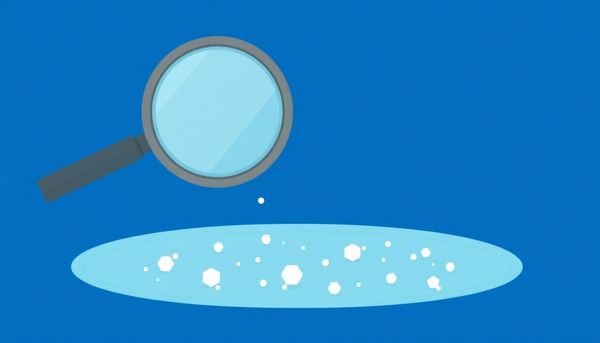
White flakes in your hot tub can be an unwelcome surprise, but tackling them need not be daunting. If you've encountered these pesky particles, calcium scale is likely the culprit. Originating from hard water, these deposits form when calcium levels exceed recommended thresholds. The good news? You can tackle them efficiently with a few straightforward steps.
Start by testing your water's hardness. Most home improvement stores offer testing kits, but if you're not into DIY, a professional can help. Once you've confirmed high calcium, it’s time to restore balance. Begin by draining your hot tub. This might seem drastic, but it's essential for eliminating existing scale. As you refill, consider using a hose filter to reduce mineral content from the start.
Next, introduce a scale control product. These agents are specially formulated to keep calcium in solution, preventing it from forming flakes. Follow the manufacturer's instructions carefully to ensure optimal results. Regular water testing is crucial; it keeps tabs on your calcium levels and lets you adjust treatment as needed.
Finally, maintain a routine cleaning schedule. Regular filter maintenance prevents buildup and supports a healthy balance in your tub's ecosystem. With these measures, those unsightly flakes will be a thing of the past, letting you soak in peace. Keeping a watchful eye on water quality ensures your hot tub remains a serene escape rather than a flaky fiasco.
Ever peered into your hot tub, expecting serene bubbles, only to find unwelcome white flakes floating about? It's like discovering confetti at a party you didn't plan. Identifying these intruders is the first step to reclaiming your peaceful soak. The culprits usually fall into two camps: calcium scale and biofilm resulting from white water mold. Each requires a different approach to tackle and prevent their return.
Calcium scale, a frequent flake foe, emerges when your water contains too much calcium. This "hard water" issue can cause unsightly deposits, akin to the chalky residue left by a spill on a summer day. To determine if this is the root of your flake problem, gather some flakes in a cup, add a few drops of bleach, and wait. If the flakes remain, calcium scale is your adversary.
On the other hand, flakes that vanish in this test are likely biofilm from mold, a stubborn visitor attracted by neglect. Picture your hot tub as a high-maintenance friend; leave it alone too long, and things get messy. Mold thrives in the forgotten corners of your tub, thriving on the warmth and moisture. Regular cleaning and maintenance, akin to giving a houseplant a little TLC, can keep this at bay.
Understanding these causes transforms you into a flake-detective, ready to address and prevent these pesky issues, ensuring that your hot tub remains a blissful escape rather than a flake-filled frustration.
In the quest to maintain a pristine hot tub, establishing effective cleaning routines is key. Regular maintenance not only prevents those unsightly white flakes but ensures your spa remains a welcoming oasis. Start by setting a routine schedule for cleaning, much like you would for any household chore. Consider it a small investment of time that pays off with every flake-free soak.
Begin with a deep clean every three months, which involves draining the tub, scrubbing the surfaces, and replacing the water. This practice tackles calcium scale and biofilm buildup head-on, arresting the development of those pesky flakes. Pay special attention to your tub's filters; cleaning them monthly keeps debris and contaminants in check. A simple rinse might suffice for some, but a thorough soak in a filter cleaner is recommended to eliminate stubborn residues.
Weekly, test the water balance. This doesn't just help with maintaining clarity, but it also prevents the conditions that foster flake formation. Adjust pH levels and alkalinity as needed, and don't forget to add a quality water clarifier to help bind small particles, making them easier to filter out. If you suspect hard water, consider using a calcium reducer or water softener to keep those minerals from settling.
Lastly, address the area around your hot tub. Sweep away leaves and debris that can introduce unwanted particles into the water, and make sure to cover the tub when not in use. With these habits in place, your hot tub will remain a clean, inviting retreat, flake-free and ready for relaxation.
Every hot tub owner enjoys a relaxing soak, but nothing ruins the experience faster than those pesky white flakes. At the heart of this issue lies an often overlooked aspect—balancing your water to prevent scale. Hot tubs can be a magnet for mineral deposits if the water chemistry isn't just right. In regions where hard water flows freely, calcium tends to accumulate, leading to those unsightly flakes that float around your tub.
Begin by testing your water's hardness regularly. Test strips can be your best friend here, providing quick insights into calcium levels. If the calcium concentration is on the higher side, it's time to act. Adding a water softener ensures that your hot tub remains a haven of relaxation rather than a site for unwelcome deposits. Chelating agents can also be added; they bind with calcium, preventing it from settling in your tub.
Regularly adjust pH and alkalinity. When these parameters fall out of balance, it sets the stage for scale formation. Aim for a pH level between 7.2 and 7.8 and keep alkalinity between 80-120 ppm. Doing so not only prevents scale but also enhances the effectiveness of your sanitizers.
Once you master the art of balanced water chemistry, those stubborn white flakes will become a thing of the past. Enjoy your hot tub without disruptions, knowing you've taken the right steps to keep it flake-free.
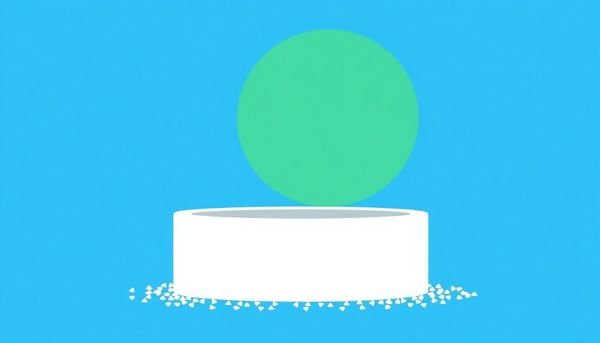
A hot tub can be a haven of relaxation, but neglecting it can quickly turn that bliss into a breeding ground for unwanted mold. Regular cleaning becomes your first line of defense against these pesky invaders. Dust off those gloves and roll up your sleeves, because maintaining your hot tub's hygiene is easier than you think.
Begin by establishing a weekly cleaning routine. This doesn't mean spending hours scrubbing every nook and cranny; rather, it's about consistency. A quick wipe-down of surfaces and a gentle rinse of the filters can prevent the buildup of biofilm. This invisible layer of organic material loves to cling onto any damp surface, and if left unattended, it transforms into those infamous white flakes.
Every few months, embark on a more thorough clean. Drain the tub, scrub the shell with a non-abrasive cleaner, and soak the filters in a cleaning solution. Remember, it's not just about the visible parts; your plumbing can harbor mold too. Using a pipe cleaner solution can tackle hidden residues, ensuring water flows freely and stays clear.
In my experience, setting a reminder on your phone or calendar helps keep you on track. Just like you wouldn't skip a dentist appointment, don't skip a hot tub cleaning session. With a little proactive care, you can prevent mold from taking hold and keep your water invitingly clean.
Ever wondered why your hot tub has suddenly turned into a snow globe, with pesky white flakes ruining your relaxation time? Identifying the root cause of these unsightly flakes is essential in tackling them effectively. White flakes generally stem from two primary sources: calcium scale deposits and biofilm from mold.
Calcium scale is often the main offender. When your water is laden with minerals, such as in hard water areas, calcium can accumulate over time. These deposits eventually break free, disrupting your serene soak with their unwelcome presence. Imagine a mini limestone formation happening right in your hot tub!
On the other hand, the flakes could be a sign of biofilm, a sneaky build-up that thrives in warm, damp environments. Mold can develop if the tub has been neglected—maybe not used for a while or insufficiently cleaned. It’s like inviting mold to a cozy spa of its own in your backyard.
To pinpoint the culprit, a simple test can work wonders. Gather some flakes and water in a cup, add bleach or liquid chlorine, and wait. If the flakes remain, you’re dealing with calcium. If they vanish, it’s time to tackle that mold.
By understanding these causes, you're one step closer to reclaiming your crystal-clear hot tub and ensuring your next soak is as relaxing as it should be.
Maintaining pristine water quality in a hot tub is like tending to a cherished garden; regular care keeps it flourishing. When it comes to keeping those pesky white flakes at bay, consistent water cleaning and balancing play a pivotal role. Regularly checking and adjusting chemical levels in your hot tub ensures a harmonious aquatic environment, which is crucial whether you’re relaxing solo or hosting a gathering with friends.
Make it a routine to test your hot tub's water chemistry, paying close attention to the pH levels and calcium hardness. Such diligence helps prevent calcium scale buildup, a common culprit behind those unsightly flakes. I once found myself dealing with a cascade of white flakes after neglecting my water's pH balance during a particularly busy month. A quick fix was within reach, yet regular checks could have spared me the hassle altogether.
In addition to chemical balancing, don't underestimate the power of a thorough cleaning regime. Remove and clean the filters frequently, as they trap debris and impurities that contribute to biofilm growth. Draining and refilling your tub every few months is essential, too, allowing you to start afresh and keep biofilm at bay. Think of it as hitting the reset button for your hot tub's ecosystem. By embracing these habits, you not only enhance your soaking experience but also extend the life of your beloved hot tub, ensuring many more relaxing moments ahead.
Keeping a hot tub sparkling clean isn't just about aesthetics; it's about dodging the frustration of white flakes dancing on the water's surface. At the heart of this battle is biofilm—a stubborn residue formed by bacteria that love warm, damp environments. Imagine biofilm as a clingy guest that, once settled, refuses to leave without a fight. Luckily, the secret to prevention lies in diligent cleaning routines.
First, embrace the art of regular water checks. Test and balance your water chemistry often, ensuring it’s inhospitable for unwanted microorganisms. A balanced pH level is your first line of defense. Remember, a little effort now saves extensive cleaning later.
Every few months, give your hot tub a deep clean. Drain the water, scrub the tub’s surface, and, importantly, cleanse the filters. The filters work tirelessly to capture debris—don’t forget to return the favor by cleaning them thoroughly. It’s easy to overlook, but a well-maintained filter is a fortress against biofilm.
Don't underestimate the power of shock treatments. They break down organic contaminants, ensuring your spa remains a peaceful retreat rather than a poolside science experiment. After a fun weekend gathering, give your tub a shock to maintain its pristine condition.
With a consistent cleaning schedule, those pesky white flakes can be banished for good. And trust me, once you've got this routine down, the only thing you’ll have to worry about is who gets the best seat in the tub.
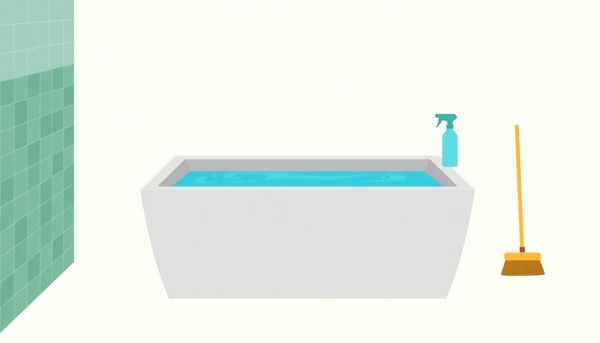
Water chemistry plays a crucial role in the health of your hot tub, much like a balanced diet is key to your own well-being. Those pesky white flakes often signal an imbalance, particularly when it comes to calcium levels. Too much calcium — what we call hard water — leads to scale deposits. Imagine each flake as a tiny reminder to give your water the attention it craves.
Start by testing your water at least once a week. Kits are available that check for pH, alkalinity, and calcium hardness, revealing the hidden stories your water might be telling. If your calcium levels are high, consider using a water softener or adding a sequestering agent to prevent scaling. These steps can help avert the dreaded flake invasion.
Think of pH and alkalinity as two dance partners in harmony. The ideal pH should sit between 7.2 and 7.8, while total alkalinity should range from 80 to 120 ppm. Keeping these levels balanced helps prevent calcium from crystallizing into those unsightly flakes. If you neglect these values, like ignoring a leaky faucet, the problem only grows.
Lastly, remember to change the water in your hot tub every three to four months. This fresh start ensures that your efforts in maintaining balanced water chemistry aren’t in vain. Maintaining clean, inviting water is the key to a relaxing soak, free from unwelcome floaters.
Unraveling the mystery of white flakes in your hot tub starts with identifying their root cause. These unsightly specks can turn a blissful soak into a head-scratching puzzle. The most common causes are calcium scale and biofilm buildup. Understanding which of these is plaguing your tub is crucial for implementing the right solution.
Calcium scale often takes the blame when hard water is involved. Your tap water might be packing more minerals than your hot tub can handle, leading to these stubborn flakes. They form when too much calcium accumulates, eventually breaking loose and floating around. Think of it as tiny, rebellious rock formations making your spa their home. Addressing this requires balancing your water chemistry to prevent further deposits.
On the flip side, biofilm buildup is a sneaky culprit, thriving in the warm, damp environment if left unchecked. Mold and bacteria can hide within the plumbing and surfaces, unnoticed until flakes make their unwelcome debut. In my own backyard oasis, I learned the hard way that an idle, uncleaned hot tub can quickly become a breeding ground for these nasty guests.
To determine the flake type, conduct a simple bleach test. Mix some flakes with water and a few drops of bleach. If the flakes dissolve, biofilm is your issue; if not, calcium scale is the offender. Armed with this knowledge, you can tailor your approach to banishing these flakes and reclaiming your hot tub’s pristine waters.
Once those annoying white flakes start appearing in your hot tub, it's time to tackle the problem of excess calcium deposits head-on. The magic happens in balancing your water chemistry. First, grab a test strip and determine the hardness level of your water. Ideal calcium hardness should sit between 150-250 ppm. If your levels are soaring above this, it's time to take corrective action.
Invest in a water softener or a calcium reducer specifically designed for spa use. These products help lower the calcium content and prevent those pesky flakes from taking over your relaxation haven. Additionally, regularly cleaning your filters ensures they aren't harboring any leftover deposits. A gentle soak in a filter cleaning solution, followed by a thorough rinse, will keep them in top shape.
Temperature also plays a crucial role; excessively hot water can exacerbate calcium scaling. Maintain your hot tub's thermostat within recommended limits to minimize scaling risks. Once your water chemistry is balanced, a descaling agent can be your best friend for any lingering deposits on the tub surface.
It's a bit like tuning a musical instrument; with the right balance, everything plays harmoniously. Implementing these steps not only clears away today's problems but also sets up a future free of calcium-induced stress. Before you know it, those flakes will be a distant memory, leaving you with nothing but clear, inviting water to enjoy.
In the realm of hot tub maintenance, preventing biofilm build-up is akin to keeping a secret garden free of weeds. These sneaky biofilms are a notorious mixture of bacteria and organic matter that cling to surfaces, forming a sticky film in all the hidden nooks of your tub. They might seem harmless at first, but left unchecked, they evolve into those unsightly white flakes, ruining your otherwise perfect soak.
To thwart these unwelcome guests, start with a thorough cleaning regime. Consistency is key—drain and scrub your hot tub regularly, paying close attention to crevices where biofilm loves to hide. A personal trick I swear by involves using a specialized hot tub cleaner that targets biofilms specifically. This extra step can make a significant difference in keeping your tub pristine.
Additionally, don’t underestimate the power of a proper water balance. Ensure you’re maintaining the right levels of sanitizer, as this is your first line of defense against bacterial growth. Shock treatments can be your ally here; they effectively kill off lurking bacteria before it has a chance to form a biofilm.
More than just about cleanliness, preventing biofilm is about establishing a routine that respects the delicate balance of your hot tub environment. With diligence and the right tools, you can enjoy your hot tub without the worry of pesky white flakes interrupting your relaxation.

One quiet evening, while unwinding in your hot tub, you might notice unwelcome white flakes, a subtle reminder of neglected maintenance. These pesky particles can be the result of a buildup of gunk—unwanted residue from lotions, cosmetics, and other personal care products that accumulate over time. Ensuring your hot tub stays gunk-free is essential for maintaining fresh, inviting water.
Begin by adopting a regular cleaning routine, focusing not just on the water itself but also on the hot tub's plumbing system. Consider using a pipe cleaner solution, designed to flush out oils and residues that cling to the inner walls of your tub's plumbing. This step is crucial, as these residues can harbor bacteria, culminating in biofilm—a primary suspect in the case of those white flakes.
Beyond internal cleaning, pay attention to what goes into your hot tub. Encourage guests to rinse off lotions and cosmetics before taking a dip. It's a simple act, but it significantly reduces the introduction of contaminants that contribute to gunk buildup.
Remember to change your water regularly. Draining and refilling your hot tub every three to four months can prevent the formation of stubborn deposits and keep your water sparkling. For those living in hard water areas, using a pre-filter can also help reduce calcium levels, ensuring your soak remains flake-free. With these practices, you'll keep your water pristine and your relaxation uninterrupted.
White specks floating in your hot tub can turn a relaxing soak into an unwelcome surprise. Unraveling the mystery of these flakes is crucial to restoring your tub to its pristine condition. Whether it's a lazy Sunday afternoon or a chilly winter evening, the last thing you want is to find your hot tub befouled by intruders you didn’t invite.
The usual suspects behind these flakes are calcium scale deposits or biofilm buildup from mold. High levels of calcium in your water can lead to mineral deposits that manifest as pesky white flakes. This is especially common in areas plagued by hard water. On the other hand, if your tub has been neglected, the warm, humid environment becomes a haven for mold, resulting in a biofilm coating that sheds flakes into the water.
To figure out which culprit you’re dealing with, conduct a simple test. Collect some flakes in a small container of spa water, add a few drops of bleach or liquid chlorine, and wait 30 minutes. If the flakes remain, calcium is to blame. If they vanish, it’s mold.
Understanding these causes allows you to take targeted action. Regular water balancing and cleaning regimens can stave off hard water’s effects and thwart mold growth, ensuring your hot tub remains a sanctuary, free from unwelcome surprises.
Calcium scale, those pesky white flakes clouding the pristine waters of your hot tub, are a common nuisance for many spa enthusiasts. It's a bit like finding confetti in your morning coffee — unexpected and definitely unwelcome. These tiny flakes form when hard water deposits calcium, often due to an imbalance in your water chemistry. Ignoring them not only detracts from your soaking pleasure but can also lead to more serious issues, like clogged filters and malfunctioning jets.
Begin by testing your water to confirm calcium is the culprit. If the scales persist after the bleach test, it's time to balance your water chemistry. First, measure your hot tub's calcium hardness using a test strip or kit. Ideally, you want this level between 150 and 250 parts per million (ppm). If your readings soar above that range, a calcium reducer or water softener additive can help bring it back in line. Regularly testing and adjusting gives you control over this aspect, preventing scale before it forms.
Routine maintenance is your ally in this battle. Drain and refill your hot tub every three to four months, flushing out minerals that accumulate over time. Additionally, invest in a pre-filter for your hose when filling the tub. This small step can significantly reduce the mineral content of the incoming water. Remember, prevention is key; keeping your water balanced not only ensures a flake-free soak but also extends the life of your beloved spa.
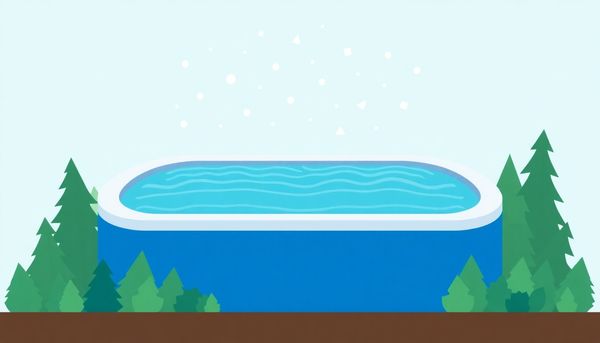
This article provided insights into maintaining your pool. Start your pool care journey today!
Want to become a pool maintenance expert? Our free Pool School course covers everything you need to know about pool care. From basic maintenance to advanced troubleshooting, you'll learn how to:
Join over 10,000 pool owners who have already transformed their pool care routine. Get started with our free Pool School course today!